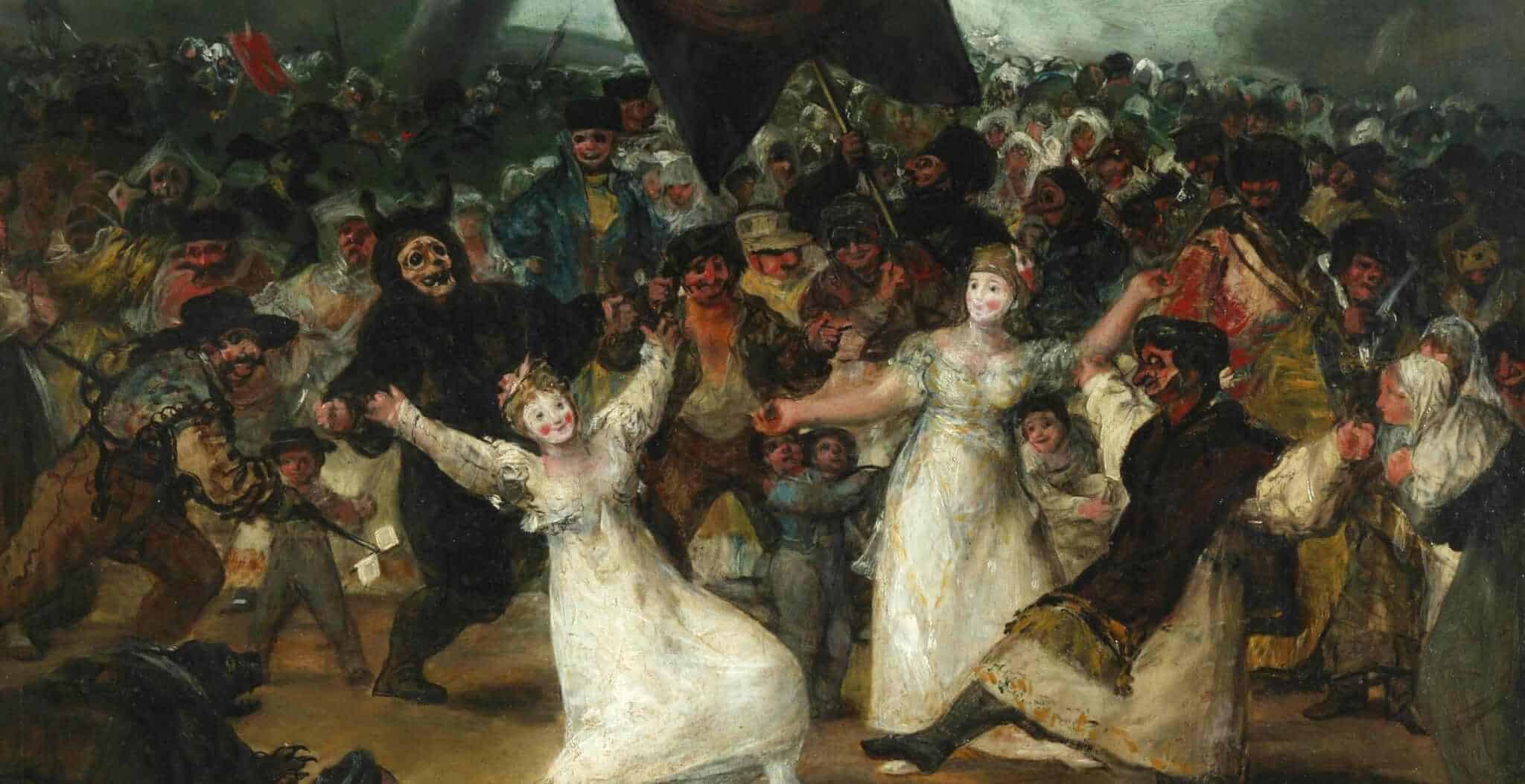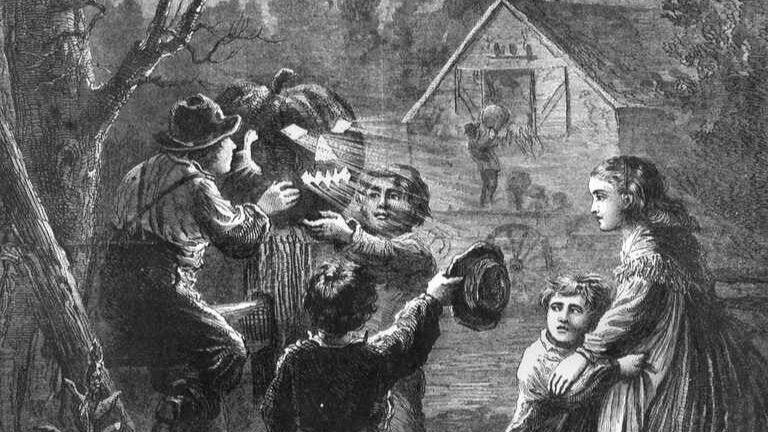As the crisp autumn leaves fall and the days grow shorter, a familiar excitement fills the air, heralding the arrival of Halloween, or All Hallow's Eve. This widely celebrated holiday has a history that spans centuries, rooted in ancient traditions and religious customs. Today, Halloween has become a time for costumes, candy, and pumpkin carving. What brought us here? Let's delve into the origin story of Halloween and explore the evolution of its core motifs, customs and rituals.

All Hallow's Eve - The Evolution to "Halloween"
Halloween has a long and storied history that began in Europe about 2,000 years ago. The earliest versions of the holiday were largely about honoring the souls of the recently deceased and fending off ghosts with not-so-friendly intentions.
In the 7th century, as Christianity spread across Celtic lands, the church sought to Christianize pagan festivals. To replace Samhain (see Costumes below!) without eradicating a large cultural tradition, the Christian Church established "All Hallows' Eve" (also known as "Hallowe'en"), which was the evening before the existing celebration of All Saints' Day (All Hallows' Day), celebrated on November 1st. All Saints' Day was dedicated to honoring all the saints, known and unknown. All Souls' Day followed on November 2nd, devoted to praying for the souls of the departed.
Originally an effort to preserve culture, Halloween has endured as the last celebration of the harvest season in the Western world on October 31, before November ushers in the winter season and the honoring of death, ancestry, and the life cycle... a very spiritual close to the calendar year.

1. Costumes
The tradition of wearing costumes on Halloween finds its origins in the ancient Celtic festival of Samhain, which marked the end of the harvest season and the beginning of winter. During this time, the Celts believed that the boundary between the living and the dead was blurred, and they would wear disguises to protect themselves from malevolent spirits. Over the centuries, this practice evolved. During the Middle Ages, elements of Celtic Samhain traditions blended with Christian beliefs, leading to the development of All Hallow's Eve. All Hallow's Eve was seen as a time when the spirits of the dead and supernatural beings were believed to roam freely. People would dress as saints, angels, and demons to "blend in," a precursor to the modern costume tradition. By the late 19th century, Halloween costumes as we know them today became more popular, incorporating elements of fantasy, horror, and pop culture - and not strictly supernatural disguises.

2. Witches
The association between witches and Halloween is rooted in a complex blend of historical events, cultural beliefs, and folklore. The mysterious and supernatural qualities attributed to witches make them a fitting symbol for a holiday that celebrates the boundary between the living and the dead, and this connection has endured and evolved over time.
A. Ancient Pagan Beliefs: Before the rise of Christianity, many ancient cultures had a belief in various forms of magic and nature-based religions. Women, in particular, were often associated with healing practices, midwifery, and herbal knowledge, and some of these practices were seen as magical or occult. These women were sometimes revered, but with the spread of Christianity, they came to be viewed as threats to the religious orthodoxy.
B. Witch Hunts and Trials: The most infamous period of witch persecution occurred during the Early Modern period, primarily between the 15th and 18th centuries. The witch hunts led to the mass execution of women accused of witchcraft. These trials were fueled by religious and social factors, including the fear of the Devil and the desire to control and suppress those who were seen as different or a threat to the established order.
C. Old World Folklore to Modern Times: Over time, witches became synonymous with the mysticism and magic associated with Halloween. They appeared in stories, folklore, and Halloween-themed decorations. Their connection to the holiday was further solidified by the publication of works like Shakespeare's "Macbeth," which featured witches as central characters.
Today, witches are often portrayed as both sinister and playful figures in pop culture, from the Wicked Witch of Oz to the enchanting Hermione Granger. While modern interpretations vary, the witch remains a central Halloween character, reminding us of the holiday's deep roots in history and superstition.

3. Pumpkin Carving
The tradition of carving pumpkins into eerie faces and placing candles inside can be traced back to the Irish folklore of Stingy Jack. Jack, a notorious trickster, was said to have trapped the Devil and struck a deal that would prevent the Devil from claiming his soul. When Jack eventually died, he was denied entry into both Heaven and Hell, forced to wander the earth with a lantern made from a turnip. Irish immigrants brought this story and the tradition of carving Jack-O'-Lanterns to America. The transition from turnips to pumpkins occurred because pumpkins were more readily available and easier to carve. The glowing faces served as protection against malevolent spirits.
4. Trick-or-Treating
The practice of trick-or-treating has its roots in the medieval custom of "souling," which involved poor people going door-to-door, receiving food in exchange for prayers for the deceased. In America, the tradition evolved into a more playful form, with children dressing in costumes and going door-to-door asking for treats. The phrase "trick or treat" implies a harmless threat to play a prank if candy is not provided. Over time, it has become a beloved Halloween tradition that brings communities together and fills the night with laughter and sweetness.

5. Rituals Honoring Death and the Life Cycle
Halloween kicks off a time when many cultures around the world honor death and celebrate the cycle of life. Traditionally, it is believed that on Halloween night, the veil between the living and the dead is at its thinnest, allowing for a connection between the two realms. Various rituals and customs, such as setting up altars for deceased loved ones, telling ghost stories, and performing divination, are practiced to connect with the spirit world and seek guidance for the future.
To enter November with the highest intentions and vibrations, we love to light a candle (or, a jack-o-lantern) and reflect on our ancestry after Halloween is over.
Below is a guided meditation you can use to embrace the end of October:
November Meditation
Find a quiet and comfortable space, where you won't be disturbed, and take a seat with your feet planted firmly on the ground. Close your eyes, take a deep breath, and exhale slowly.
Inhale deeply once again, filling your lungs with fresh air, and as you exhale, let go of any tension or worries you may be holding onto. Feel the weight of the day melting away.
Now, visualize a golden thread extending from your heart center, reaching back through time and generations, connecting you to your ancestors. Feel the strength and resilience that flows through this lineage.
Think of the qualities and values that have been handed down to you from your ancestors. What wisdom and knowledge have been preserved within your family tree? Reflect on the strengths and talents that have been cultivated over the years.
Take a moment to express your gratitude for the gifts of your ancestry. Let a warm feeling of thankfulness wash over you, filling your heart with positive energy.
Now, with each breath, imagine inhaling the love, wisdom, and resilience of your ancestors. Let these qualities infuse you with a sense of purpose and gratitude. Feel the support of those who came before you.
As you continue to breathe, envision November as a month filled with opportunities to honor your ancestry and cultivate the positive vibrations of gratitude. Imagine the blessings and abundance that await you.
When you're ready, gently open your eyes, carrying with you the high vibrations of gratitude and the intentions to enter November with a heart full of appreciation for your ancestral legacy. Embrace this month as a time to connect with your roots and carry their love and wisdom with you on your journey.
Did you enjoy this meditation? Follow us on Instagram at @leverdenofficial for more like it.

